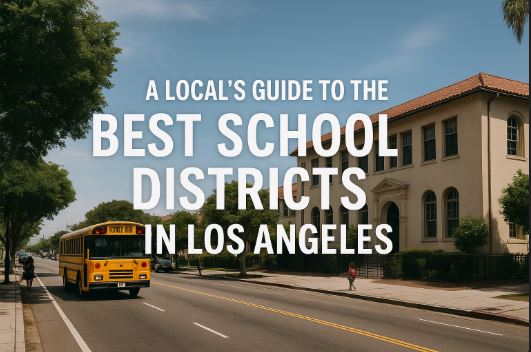Introduction to Silicon Valley Real Estate
Silicon Valley, the global hub of innovation and technology, has long been one of the most desirable and expensive real estate markets in the United States. Comprising key cities like San Jose, Palo Alto, Mountain View, and Cupertino, the region draws buyers from around the world seeking proximity to tech giants, highly ranked schools, and vibrant communities.
With its high demand and limited housing supply, real estate in Silicon Valley often defies national trends. However, shifts in interest rates, tech layoffs, and hybrid work policies are influencing local buyer and seller behavior. Many prospective buyers are wondering: is now the right time to invest in a property here?
In this article, we dive deep into market data, expert insights, and long-term trends to help you understand whether this is a good time to buy real estate in Silicon Valley. From rising interest rates to fluctuating home prices, we’ll guide you through the key factors shaping this dynamic market.
Market Trends in Silicon Valley
Home Prices and Sales Data
As of mid 2025, the median home price in Silicon Valley hovers around $1.45 million, reflecting a modest dip from its 2022 peak. Although prices remainCurrent high, recent months have shown signs of stabilization, with some neighborhoods even seeing a slight uptick in value.
Home sales volume has slowed compared to the post-pandemic surge. Many sellers are holding back due to locked-in low mortgage rates, reducing inventory and competition among buyers. As a result, well-priced homes in good school districts or near major employers continue to attract multiple offers.
Impact of Interest Rates
Interest rates have risen over the past year, reaching an average of 6.5% for 30-year fixed-rate mortgages. While this has cooled demand slightly, it has also created an opportunity for buyers who are ready to act. With fewer bidding wars and longer days on market, buyers may have more negotiating power.
For investors, higher rates mean tighter financing conditions, but also less speculative competition. Buyers who can afford higher monthly payments or leverage cash offers are in a strong position to capitalize on reduced market competition.
Factors Influencing Real Estate in Silicon Valley
Job Market and Economy
Silicon Valley remains a global tech powerhouse, with companies like Apple, Google, Meta, and Nvidia continuing to hire and expand. While the industry has experienced some layoffs, the job market remains robust, especially in AI, cybersecurity, and semiconductor sectors.
A strong local economy translates to continued demand for housing. Moreover, many high-income workers prefer owning over renting, especially those planning long-term careers in the region.
Demand and Supply Dynamics
The supply of homes in Silicon Valley remains constrained due to zoning laws, geographic limitations, and community resistance to large-scale development. Meanwhile, demand is fueled by a growing population, strong job prospects, and international interest in the region.
This persistent imbalance keeps upward pressure on home prices. Even with higher interest rates, the structural undersupply makes it unlikely that prices will see a major crash, making real estate a relatively stable long-term investment.
Advantages of Buying in the Current Market
- Less Competition: Fewer buyers means more negotiating power.
- Long-Term Value: Properties in Silicon Valley generally appreciate over time.
- Stable Economy: The tech sector continues to drive regional prosperity.
- Potential Tax Benefits: Homeowners can deduct mortgage interest and property taxes.
Potential Risks and Disadvantages
- High Entry Cost: Even with a dip, prices remain steep.
- Rising Rates: Higher mortgage rates reduce purchasing power.
- Uncertainty: Tech layoffs and global economic shifts could impact demand.
- Lower ROI (Short Term): Quick flips may not yield high returns due to slower appreciation.
Expert Opinions and Predictions
Real estate analysts suggest a cautiously optimistic outlook. While price growth has slowed, Silicon Valley’s fundamentals strong job market, limited land, and global appeal remain intact. Experts predict flat-to-moderate price increases over the next year, especially in suburban areas with good transit access.
According to mls data, buyer activity is expected to pick up in late 2025 as interest rates stabilize. Agents on the ground report that serious buyers are still active, particularly in cities like Sunnyvale and Santa Clara.
Investment firms continue acquiring multi-family properties, signaling confidence in long-term rental demand. Meanwhile, some tech employees are returning to the office, reigniting demand in core urban neighborhoods.
While timing the market is difficult, the consensus is clear: for buyers with stable finances and long-term goals, current conditions represent a window of opportunity.
Conclusion: Weighing Your Options
So, is it a good time to buy in Silicon Valley? The answer depends on your financial situation, long-term plans, and risk tolerance.
If you’re looking to plant roots, lock in a home in a prestigious area, or diversify with a long-term investment, now could be a strategic time to buy—especially if you find a well-priced property.
However, if you’re relying on low interest rates or quick appreciation, it may be worth monitoring the market a bit longer. The key is to stay informed, work with a knowledgeable agent, and approach each property with a clear understanding of value.
Visit RoosterListing.com to explore current listings, neighborhood guides, and expert insights tailored to Silicon Valley buyers.
Your smart property move starts here.








Leave a Reply